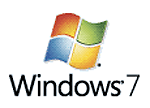Fear (and fines) can be an excellent motivator. Microsoft is giving Windows 7 users more control over what Windows components are installed on their systems. In doing so, the company may appease antitrust regulators enough to smooth the way for the OS’s release by October.
Windows 7 lets users choose which components they want installed on an à la carte basis. Internet Explorer, Windows Media Player, Windows DVD Maker, the Windows Gadget Platform, and the XPS document viewer, among others, are now optional.
Internet Explorer, long the bete noire of regulators, is not entirely gone. Microsoft is just removing the IE executable, and the guts of the browser remain integral parts of Windows. At this point, I do not think that it may not even be possible for Microsoft to remove it entirely without a major reinvention of Windows.
The US Department of Justice has had Windows 7 under its microscope for over a year. With the clock running on its authority to oversee Microsoft’s business practices, the DOJ has required Microsoft to submit Windows 7 for antitrust review, and has specifically expressed concerns over how Windows should handle middleware.
In January, the European Commission’s Directorate General for Competition notified Microsoft that it believes that company has been in violation of European competition law since 1996. The EU’s argument centers on Microsoft’s decision to bundle IE with Windows, and resolves that the remedies put in place by the company’s 2002 settlement with the U.S. Department of Justice do not make the inclusion of the browser in Windows legal under European law.
If regulators approve of the new course Microsoft has taken with middleware, it is a safe bet that Windows 7 will be preloaded on PCs by this holiday season. However, as first reported by Technologizer, Microsoft has an alternate plan to launch Windows 7 in January should it face mandates to modify the OS.

 I’ve confirmed a report by Bloomberg news report that Microsoft
I’ve confirmed a report by Bloomberg news report that Microsoft  Microsoft Research has re-imagined the Web browser to include its own operating system. In a
Microsoft Research has re-imagined the Web browser to include its own operating system. In a